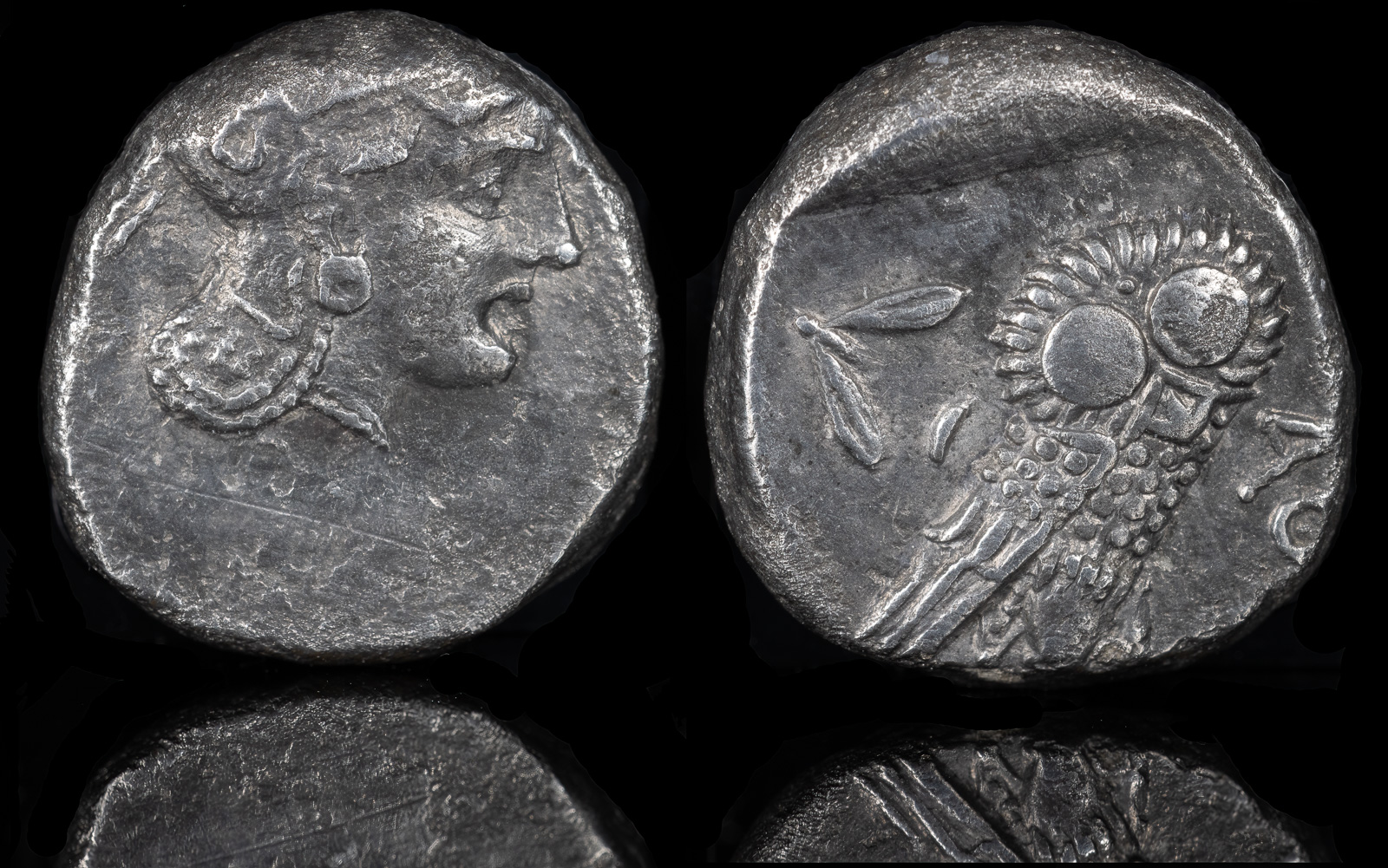
PHILISTIA (PALESTINE), Gaza
Circa 353-333 BCE
AR Drachm 14mm, 3.94 g, 12h
Imitating Athens pi-style coinage. Helmeted head of Athena right, with profile eye and pi-style palmette, Aramaic M horizonally on cheek (only traces visible) / Owl standing right, head facing; olive sprig and crescent to left.
Gitler & Tal V.25D; HGC 10, 542
While Alexander’s sieges of Halikarnassos and Tyre are more well-known from history, the siege of Gaza may have been the bloodiest. Batis, a eunuch who commanded Gaza, was well aware of Alexander‘s intentions and knew Gaza stood between him and Egypt.
Though Gaza was well-stocked and ready, the siege went quicker than the 10-month debacle of Tyre. Alexander‘s goal was to build mounds next to the walls, then use the siege engines constructed for Tyre.
Alexander himself was wounded during the encounter, not for the first time. The Gazans fought to the end, and Alexander showed no mercy. Every man was killed and Batis himself was dragged until dead.
Alexander usually showed mercy against his enemies, but evidently Batis rubbed him the wrong way.